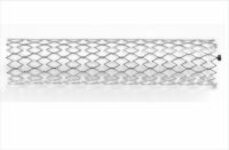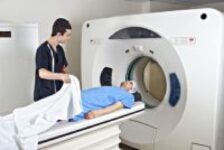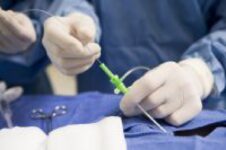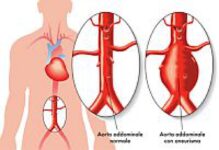Original title: Assessment of Clinical Outcomes related to Early Discharge alter elective Percutaneous Coronary Intervention: COED PCI Reference: Purushothaman Muthusamy MD, et al. Catheterization and Cardiovascular Intervention 81:6-13 (2013) The standard procedure in most institutions is that after angioplasty (PTCA) patients are discharged the next morning. There are some reports in which they were ambulatory but the safety…
Chronic Total Occlusions, challenging but very possible
Original title: Predictors of Reocclusion After Successful Drug-Eluting Stent–Supported Percutaneous Coronary Intervention of Chronic Total Occlusion. The Florence CTO PCI Registry. Reference: Renato Valenti et al. J Am Coll Cardiol 2013; article in press. Previous registry data have shown a reduction in mortality rates in patients with successful recanalization of a Chronic Total Occlusion (CTO) compared to patients…
Does the systematic use of clopidogrel reduce events prior to angioplasty?
Original title: Association of Clopidogrel Pretreatment with mortality, Cardiovascular events, and Major Bleeding among patients undergoing percutaneous coronary intervention. A systematic review and Mata-analysis. Reference: Anne Bellemain-Appaix, MD et al. for the ACTION group. The loading of clopidogrel before coronary angioplasty is an accepted practice by most clinical and interventional cardiologists but, nevertheless, it is only based on…
Self-expanding stents improve positioning in primary angioplasty
Original title: Self-Expanding Versus Balloon-Expandable Stents in Acute Myocardial Infarction: Results From the APPOSITION II Study Reference: Robert-Jan van Geuns et al. J Am Coll Cardiol Intv 2012;5:1209–19 Acute myocardial infarction is associated with vasoconstriction and thrombus occlusion. Resolution of these two points during the first hours after primary angioplasty can lead to poor extension and poor positioning…
Revascularization reduces mortality in patients with high risk coronary artery disease based on multi-slice CT
Original title: All-cause mortality benefit of coronary revascularization vs. medical therapy in patients without known coronary artery disease undergoing coronary computed tomographic angiography: results from CONFIRM (Coronary CT Angiography EvaluatioN For Clinical Outcomes: An InteRnational Multicenter Registry) Reference: James K Min et al. European Heart Journal (2012) 33, 3088–3097 doi:10.1093/eurheartj/ehs315. Several large studies have shown revascularization reduces mortality…
Advances in Proximal Occlusion Devices for Carotid Angioplasty and Stenting
Original title: A Meta-Analysis of Proximal Oclusion Device Outcome in Carotid Artery Stenting Reference: Robert M Bersin, et al. Catheterization and Cardiovascular Intervention 80:1072-78 (2012) Carotid Angioplasty and Stenting (CAS) is considered a valid alternative to treat high risk patients. Embolic protection devices have been proved effective and currently there are two EPDs available: proximal occlusion and distal…
More evidence supports ventricular assist devices in complex angioplasty procedures
Original title: Percutaneous Left Ventricular Assist Device with Tandem Heart for High-Risk Percutaneous Coronary Intervention: The Mayo Clinic Experience. Reference: Oluseun O Alli, et al. Catheterization and Cardiovascular Intervention 80:728:734 There is a small group of poor surgical patients admitted for surgery that due to complex comorbidity, coronary anatomy and compromised left ventricular function that can be treated…
The largest series of abdominal aortic aneurysm with unfavorable neck anatomy
Original title: Outcomes of Endovascular Aneurysm Repair in Patients with Hostile Neck Anatomy Reference: Stather et al. European Journal of Vascular and Endovascular Surgery 44 (2012) 556-561. Endovascular treatment of abdominal aortic aneurysms (EVAR) has already shown benefits in terms of mortality compared with conventional surgery. The disadvantages of EVAR are reinterventions for endoleaks, migration or device failure…
Are reversal flow cerebral protection devices useful in carotid angioplasty?
Original title: Prospective, Multicenter European Study of the GORE Flor Reversal System for Providing Neuroprotection During Carotid Artery Stenting Reference: Dimitrios Nikas, et, al.Catheterization and Cardiovascular Intervention 80:1060-1068 Cerebral protection systems (CPS) have proved useful in carotid angioplasty stenting (CAS), although it is not clear what the advantages are in respect to carotid endarterectomy, except in high risk…
Radial Approach, 1st choice in Acute Coronary Syndromes
Original title: Radial Versus Femoral Randomized Investigation in ST-Segment Elevation Acute Coronary síndrome. The RIFLE-STEACS (Radial Versus Femoral Randomized Investigation in ST-Elevation Acute Coronary Syndrome) Study. Reference: Enrico Romagnoli et al. J Am Coll Cardiol 2012;60:2481–9. Bleeding in patients with acute coronary syndromes (ACS) is an independent predictor of morbidity and mortality. Until today, evidence supporting the radial…









